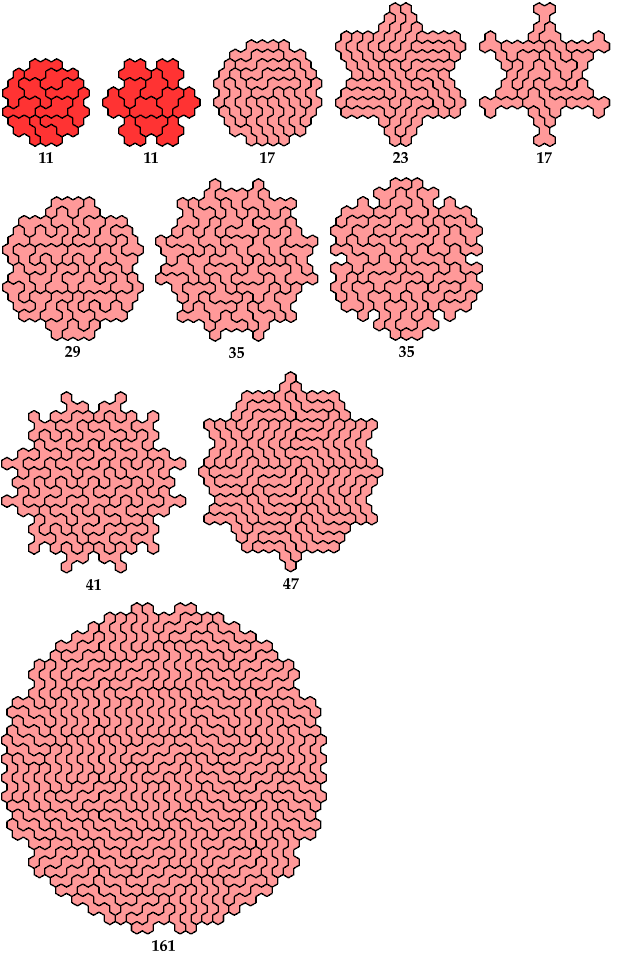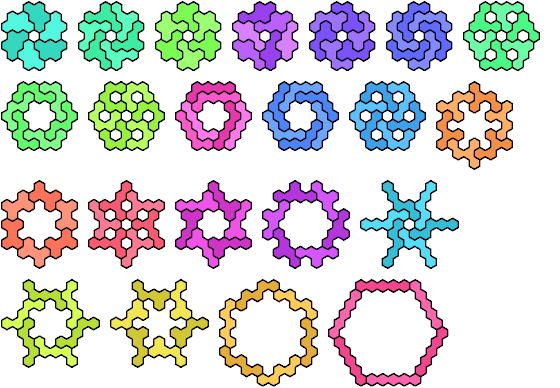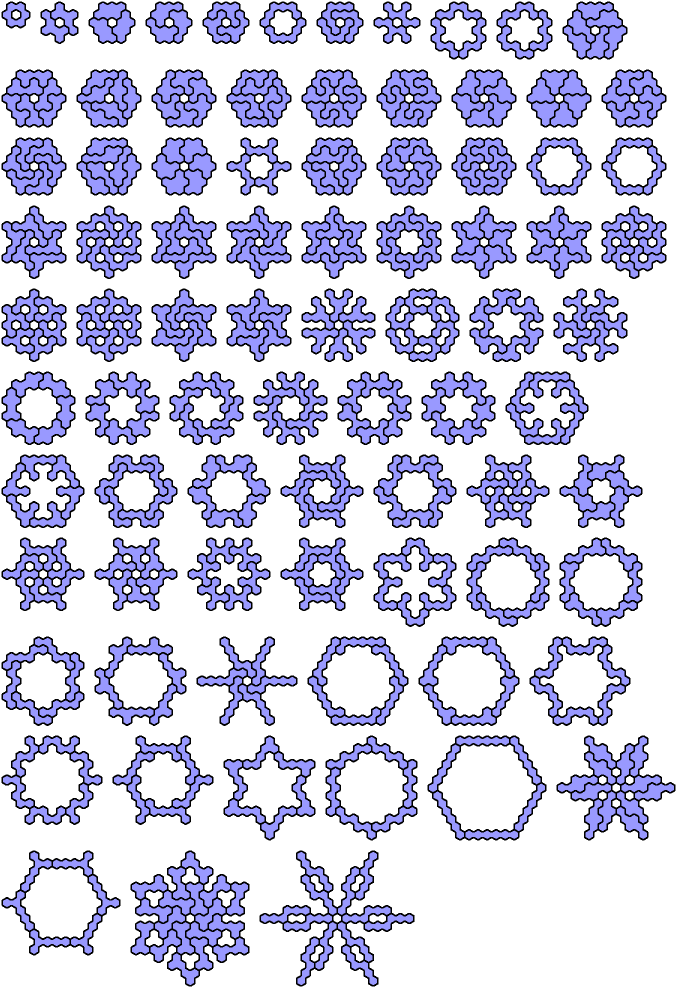
 A Baiocchi figure is a figure
formed by joining copies of a polyform and having the maximal
symmetry for the polyform's class.
For polyhexes, that means the symmetry of a regular hexagon,
or 6-way rotary with reflection.
If a polyhex lacks apothemal bilateral symmetry (see illustration at
right), its Baiocchi figures
must be Galvagni figures or contain Galvagni figures.
Claudio
Baiocchi proposed the idea in January 2008.
Baiocchi figures first appeared in Erich Friedman's
Math Magic for that month.
A Baiocchi figure is a figure
formed by joining copies of a polyform and having the maximal
symmetry for the polyform's class.
For polyhexes, that means the symmetry of a regular hexagon,
or 6-way rotary with reflection.
If a polyhex lacks apothemal bilateral symmetry (see illustration at
right), its Baiocchi figures
must be Galvagni figures or contain Galvagni figures.
Claudio
Baiocchi proposed the idea in January 2008.
Baiocchi figures first appeared in Erich Friedman's
Math Magic for that month.
Here are minimal known Baiocchi figures for polyhexes of orders 1 through 6. Not all these solutions are uniquely minimal.








Last revised 2021-08-16.